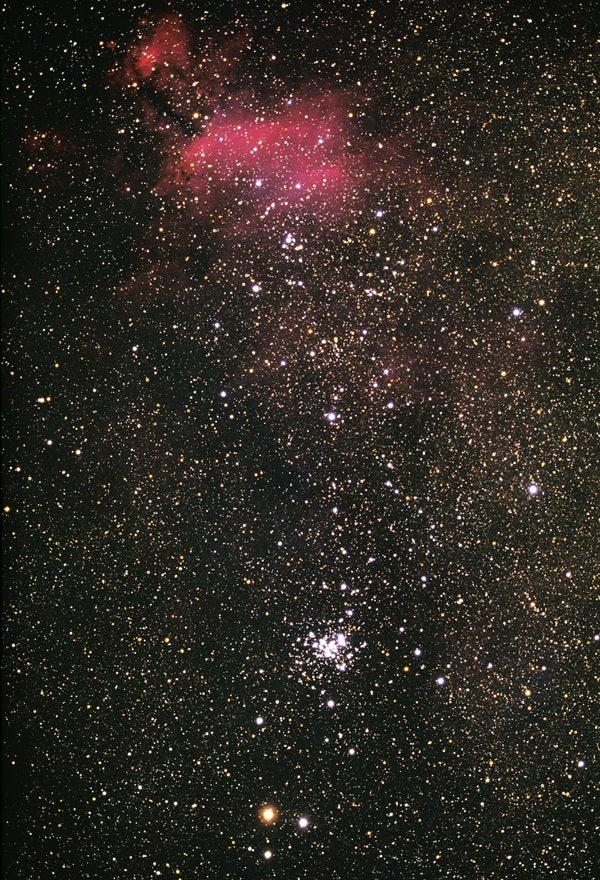Look toward the southern region of Scorpius and you’ll encounter what seems to be a brilliant comet. The head of this asterism, known as the False Comet, is the spectacular NGC 6231. This is the sky’s sixth-brightest open cluster, an object often called the Northern Jewel Box because of its resemblance to the Jewel Box Cluster (NGC 4755; see #40) in the southern constellation Crux. NGC 6231’s apparent diameter is 15′, half that of the Full Moon, and it lies some 5,500 light-years away.
Italian astronomer Giovanni Battista Hodierna discovered NGC 6231 in 1654 and included it on a list of nebulous objects that observers might misinterpret as comets (just as Charles Messier had 120 years later). This object shines so brightly, however — at magnitude 2.6 — that skywatchers earlier than Hodierna certainly noticed it.
The area from Zeta (ζ) to Mu (μ) Scorpii contains a group of young blue stars called the Scorpius OB1 association. To our eyes, some 20 members appear more luminous than 9th magnitude. Up close, they would be blinding. The brightest stars of the Northern Jewel Box put out 60,000 times more light than the Sun.
Although this cluster is an easy naked-eye target that stands out well even from the surrounding Milky Way star field, binoculars will reveal half a dozen lesser open clusters nearby. When you finish glancing at those, point a 4-inch telescope back at NGC 6231 and you’ll see more than 100 stars strewn across its ¼°-wide diameter. Crank up the power and look at the center of this object for a tight grouping of stars that outshine the others.
Make sure to explore Astronomy’s full list of 101 cosmic objects you must see. New entries will be added each week throughout 2022.










